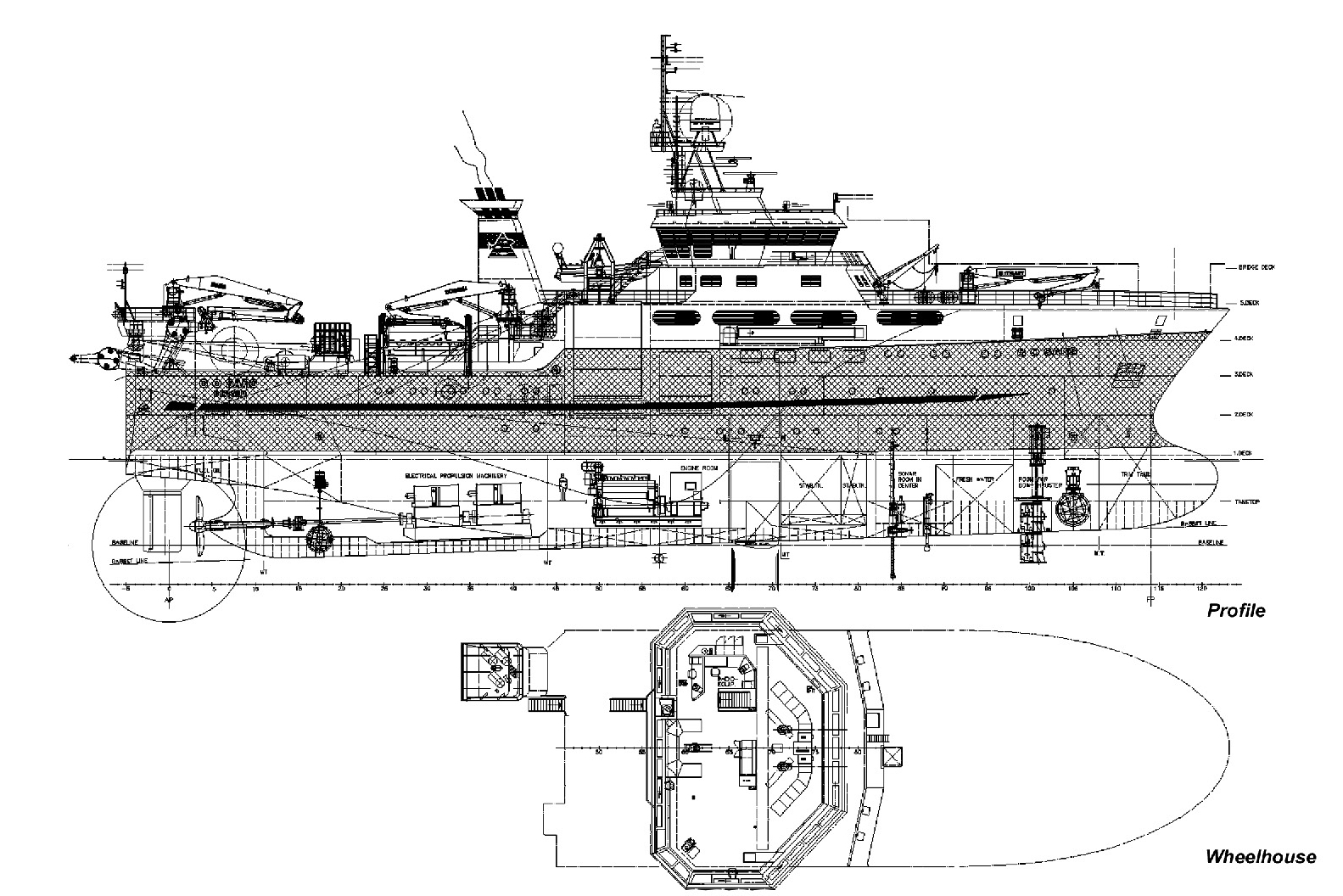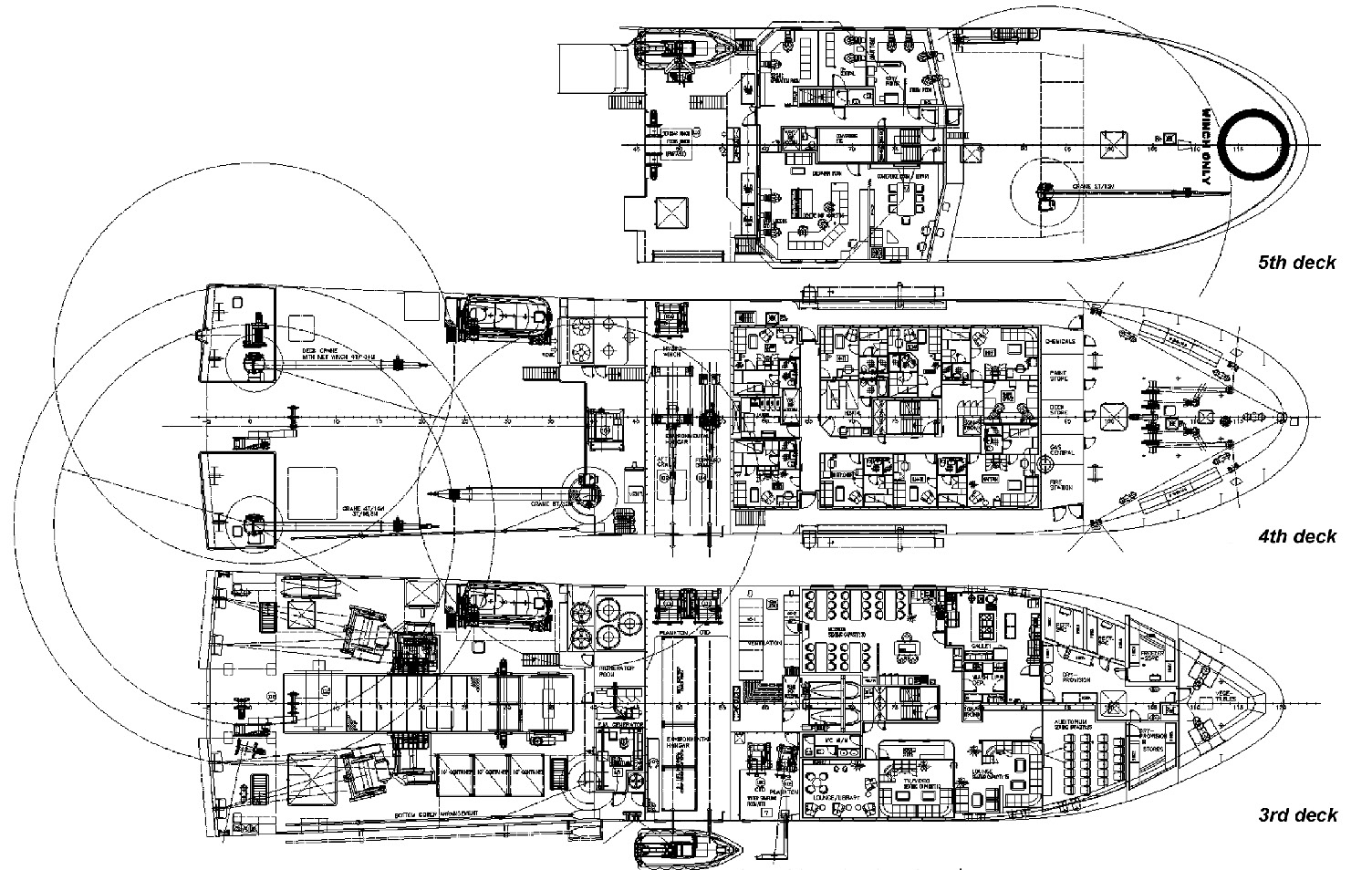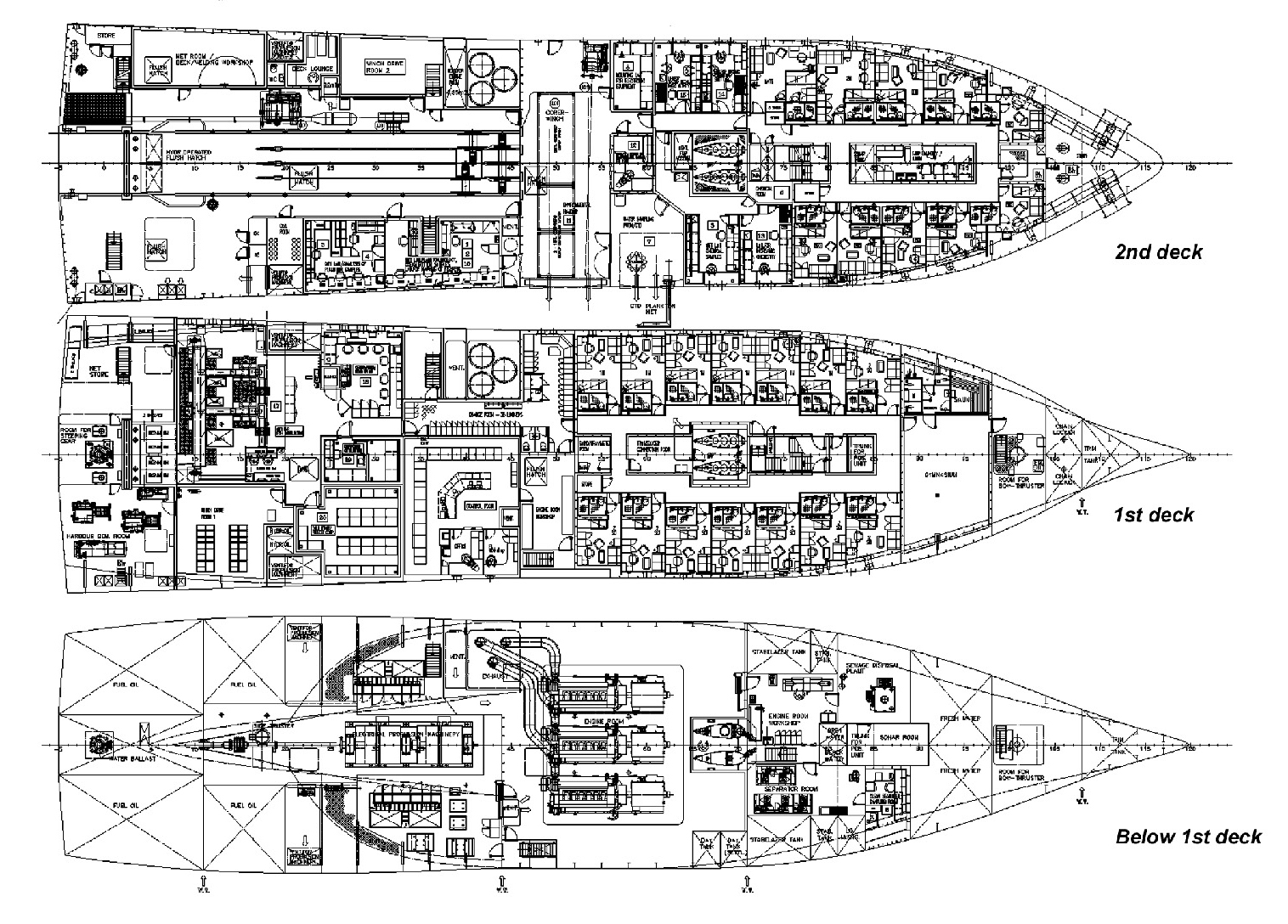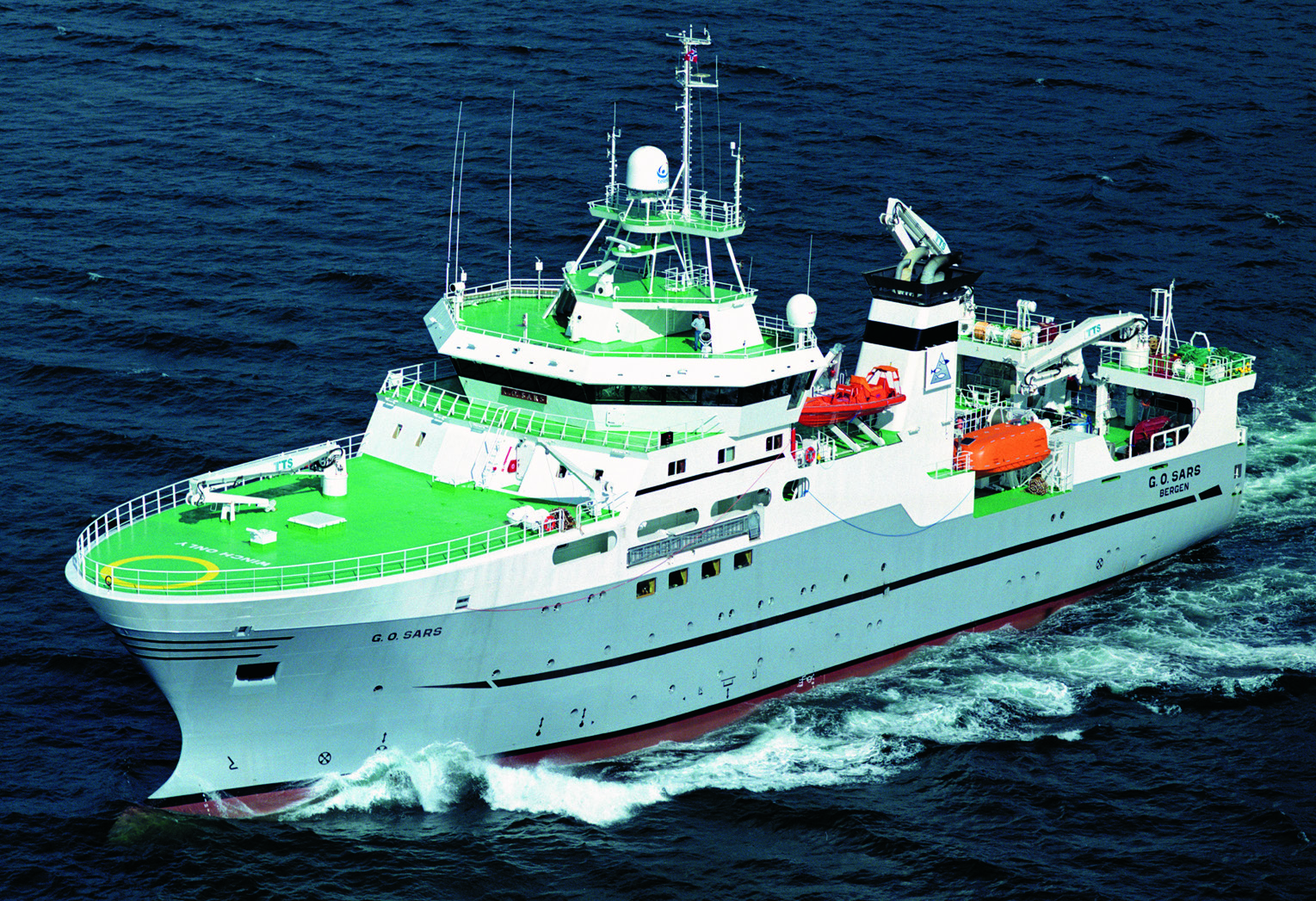

Fishery research vessel G.O. SARS
The Norwegian highly-sophisticated research vessel, the G.O. SARS, was delivered on 25 April 2004 from the shipyard Flekkefjord Slipp AS to the Institute of Marine Research. The hull was built in Poland at NAUTA shipyard.
The G.O. SARS is arranged and equipped with state-of-the-art technology in order to carry out a wide variety of research work. Examples of the research work the vessel is capable of carrying out include: pelagic and bottom trawling, plankton sampling, CTD/rosette operations, towed body operations, hydrographic operations, water sampling, miscellaneous kinds of environmental sampling, grabbing and coring, hydro-acoustic research work, and seismic operations.
With its vibration- and noise-damped diesel generators and the propellers driven by direct current motors, “G.O. SARS” is an extremely quiet vessel when under way. It emits 99 percent less noise under water than conventional research vessels. When performing stockmeasurements the distance where fish avoid the ship is only 15 m versus the above 200 m previously. In addition the vessel is equipped with two drop keels enabling the sensitive instruments to be lowered 3-4 m below the bottom of the vessel, and thus will have optimal working conditions.
The vessel has more then 20 laboratories and special rooms for scientific work. Since the vessel also shall operate in northern cold waters, the solutions onboard are designed for this operation. Most research operations, except for the fishery part, will be performed from the environment hangar and the CTD hangar amidships. They are closed heated hangars with side gates. Here all preparation and complementary work may be executed comfortably and under shelter, and the crew is only exposed to weather during the sampling itself.
The vessel is equipped with dynamic positioning system, and this system simplifies to a great extent the challenge of keeping the vessel in the set position during sampling, which in turn improves the accuracy and quality of the samples.
The G.O. SARS is built with a diesel-electric propulsion system not only because of better operation economy, but also because of the noise requirements. The propulsion engines are based on D.C. as frequency converters are likely to make too much noise. For the same reason, the ship is not equipped with a gearbox, but has direct running of propeller from the motors. The propulsion system has a capacity of 6000 kW. The power supply is generated from three diesel generators, type Wärtsilä 6L32, each with an output of 2700 kW.
Morever the vessel is equipped with electric winches. This solution is supposed to offer the best operating result in course of time. In addition, this solution implies that hydraulic pipes are replaced by electric cables, and the risk for leakage in the hydraulic system is eliminated. Thus a very tidy and clean solution onboard is achieved.
The G.O. SARS will has a crew of 45 persons – 30 scientists and 15 crewmembers. In accommodation, the crew well being and environment are emphasized with large common areas including a well-equipped gymnasium with sauna. It is used by researchers from the University of Bergen and IMR working both independently and together.
Before the delivery of the “G.O. SARS” SKIPSTEKNISK AS has designed two super silent research vessels and all two fulfill ICEC noise requirements. The first of them is the Scottish research vessel “Scotia” delivered in 1998. The second is the Irish research vessel, the “CELTIC EXPLORER”.



